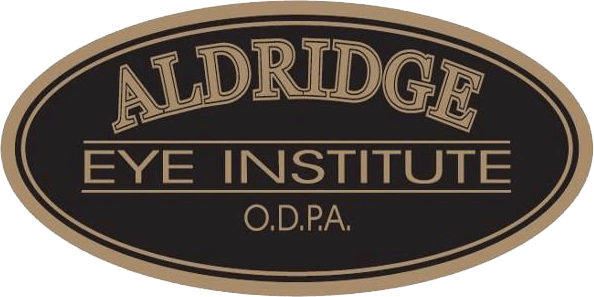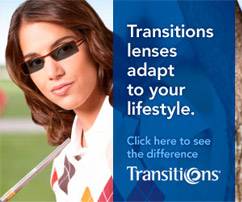Overview
Myopia--commonly known as nearsightedness–is a condition in which light focuses behind the retina causing a circle of blur at the center of the retina (fovea) instead of a point focus. Myopia typically results from the eye being too long for its refractive components, which is known as axial myopia. Less commonly, myopia is refractive in nature and occurs when the corneal power or lenticular power is too strong for the eye.
Myopia affects approximately one third of Americans and is likely caused by a mix of genetic, lifestyle, and environmental factors. Anyone has a chance of becoming myopic, even children without myopic parents. However, having one myopic parent makes a child about twice as likely to develop myopia and a child with two myopic parents is about five times more likely. (1-2)
The prevalence of myopia has increased over the past 3-4 decades, likely because of environmental factors such as more near-point activities and people spending less time outdoors. Research shows that spending approximately two hours per day outdoors may be able to prevent the onset of myopia in at-risk patients, but outdoor time has little effect on patients who are already myopic. (3-4) However, experts believe that using refractive treatments that vary the defocus from the center of the retina (fovea) to the retinal periphery can slow the progression of myopia. (6) By reducing the amount of myopia that develops by the time a child reaches adulthood, we can not only decrease dependence on glasses and contact lenses, but also lower the risk of conditions such as glaucoma and retinal detachment. (5)
Methods of Myopia Control
Orthokeratology–this technique has been in use the longest and was developed to alleviate the need for daytime myopic correction with glasses or contact lenses. Now orthokeratology is used to slow myopia progression and investigators have shown that it is an effective technique to slow myopic progression by about 50%. (7-8)
Here’s how it works: the rigid-gas permeable lenses are worn while sleeping, and after about a week of nighttime wear (depending on starting refractive error), after corneal reshaping has taken full effect, clear distance vision is kept during daytime hours without the need for other glasses or contact lenses. Soft daily disposable contact lenses may be provided for daytime use during the first week of treatment while the treatment is building to its full effect. After that, as long as the lenses are worn each night, no lenses will be needed during the day and we should effectively cut the expected amount of myopia progression in half.
Of course, the patient needs to be mature enough to apply contact lenses, but since they are not worn outside the home, parents can help with this method.
It is important to understand that the treatment does not “fix” the myopia. It just slows it down, and treatment with orthokeratology will need to continue for several years to obtain meaningful results. No one knows when myopia progression will stop, but some studies show that some patient’s eyes continue to grow into their 20’s. (COMET study) I recommend continuing the treatment as long as it is effective and feasible.
Multifocal Soft Contact Lenses–originally designed for correcting presbyopia or “after 40 vision”, some center-distance multifocal contact lens designs can slow myopic progression much like orthokeratology, by reducing peripheral hyperopic defocus. Although the efficacy results of the studies vary greatly, the data suggest again that these center-distance contact lens designs can slow myopia progression by about 50%. (9-10)
Since these contact lenses will be worn by the child outside the home, children who wear this option need to be fully responsible for handling the lenses themselves. However, studies do show that children can be very successful and safe with soft lens wear, even more so than college age adults, and both groups may find social benefits from wearing contact lenses. (11)
Like orthokeratology, treatment with soft multifocal contact lenses does not “fix” myopia, just slows it down and will need to be continued as long as is feasible to achieve meaningful results, possibly into early adulthood.
Atropine–this method is very different from the first two. Atropine has been safely used to treat amblyopia (lazy eye) at a 1% concentration and is also likely safe and effective for myopia management. However, at a 1% concentration, it produces too many unwanted side effects such as light sensitivity and reduced accommodation to be practical for myopia control.(12) A more recent study compared 1% atropine to 0.01% atropine for slowing myopia progression and found that while the 0.01% did not slow myopic progression to the same degree as the 1%, it was actually more effective in preventing a rebound effect when stopped. Because of the limited rebound effect, 0.01% atropine slowed progression by 59%. (13) The mechanism by which atropine slows eye growth is still unknown and the low-dose atropine can only be obtained from a compounding pharmacy as the specific concentration is not commercially available. The biggest advantage of this method may lie in the fact that since parents can administer the drops, it can be used in even the youngest patients.
The Myopia Management Evaluation
Now that we have an understanding of what myopia is, why we want to limit its progression, and some commonly accepted methods of accomplishing our goal, we need to decide which, if any, of these methods are right for you and your child. I need to understand your child’s visual needs, including extracurricular activities and hobbies, as well as maturity and motivation for contact lenses.
As part of the work-up, we will measure visual acuity, refractive error by several methods of measurement, eye tracking and focusing, pupil size, corneal topography, iris diameter, and axial length of the eye. All these factors influence which treatment option may work best for your child and some will be measured again later to monitor the myopia progression and/or contact lens fit.
Again, it is important to remember that no one knows what final amount of myopia your child might have if we do not intervene, and based on the studies we have on these options for management, we will likely reduce the final refractive error by about 50%, not completely stop the progression. Treatment will need to continue for as long as possible to achieve best results and six month follow-ups to check for stability should be expected.
Pricing
While annual examinations can be filed to medical or vision insurance and vision insurance may help offset the cost of contact lens materials, the professional services involved in myopia management are not covered by insurance. A one-time fee is charged for myopia management services during the first year of treatment and includes a one-year supply of contact lenses or atropine eye drops, depending on the recommended treatment.
Following the first year of myopia management treatment, the patient will need to continue to receive the annual comprehensive eye examination (can be filed with medical or vision insurance if applicable) as well as one myopia management follow-up evaluation per year, to be scheduled for six months following the comprehensive exam.



